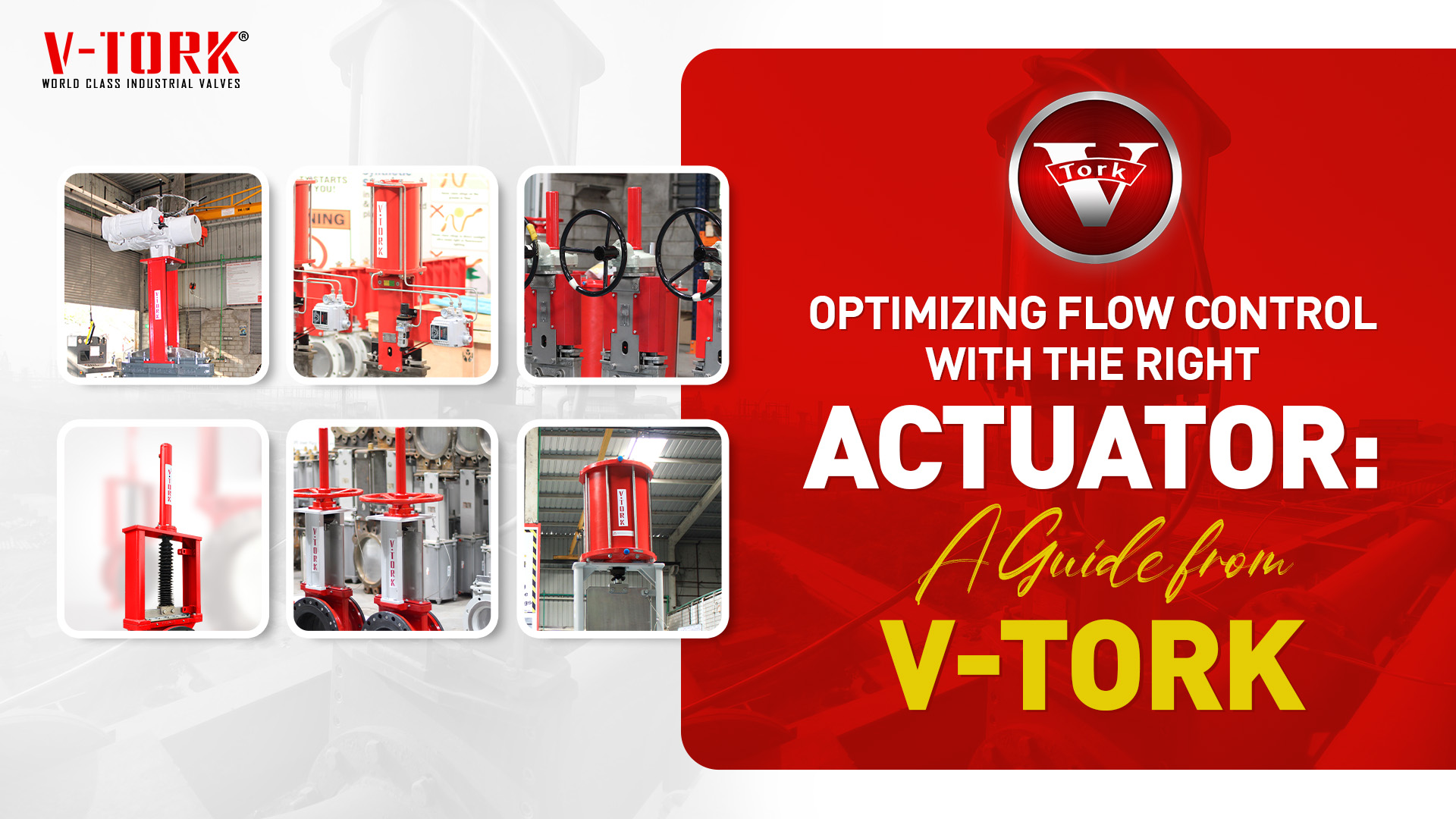
Optimizing Flow Control with the Right Actuator
In the intricate world of industrial processes, efficient flow control is paramount. Industrial Valves play a crucial role in regulating, isolating, and diverting fluids, but their effectiveness hinges on one critical component: the actuator. Choosing the right actuator for your valve directly impacts performance, efficiency, and overall system reliability. This guide, brought to you by V-Tork Controls, a leading name among valve manufacturers, explores various actuator types and how to select the ideal solution for your specific needs.
Understanding Common Valve Actuator Types
Actuators come in various configurations, each with its strengths and ideal applications. Here’s an overview of the most common types
Manual Hand wheels/Hand Levers: This provide precise, mechanical control without external power. Hand wheels rotate to adjust valves gradually, ideal for precise positioning.
Manual Gear Box: Uses gears to convert rotary motion into controlled linear or rotary movement. They provide mechanical advantage through gear reduction giving precise control over movement and torque.
Pneumatic Actuators: Using compressed air for operation, these actuators are known for their speed, power, and affordability. They are widely used in various industrial settings.
Electric Actuators: Electric actuators offer precise control and are ideal for applications requiring automation and integration with control systems. They are becoming increasingly popular due to their ease of use and versatility.
Hydraulic Actuators: For high-pressure applications requiring immense force, hydraulic actuators reign supreme. These powerful actuators are commonly used in heavy machinery and demanding industrial processes.
Factors to Consider When Choosing an Actuator
Selecting the right valve actuator involves evaluating several key factors
Valve Type: Different valve types (knife gate valves, ball valves, butterfly valves, etc.) require compatible actuator designs for proper operation.
Flow Requirements: Consider the flow rate, pressure, and direction required for optimal process control.
Torque and Thrust Needs: The actuator must generate enough force (torque or thrust) to effectively open and close the valve.
Environmental Conditions: Extreme temperatures, corrosive environments, or explosion risks may necessitate specific actuator materials and designs.
Control and Automation Needs: If integration with control systems is crucial, electric actuators offer greater flexibility.
Maintenance Requirements: Consider the ease of access, maintenance procedures, and spare parts availability for the chosen actuator.
Beyond the Basics: Advanced Actuator Features
Modern actuators can elevate your flow control game with features like position feedback, offering real-time valve position data for precise control. Variable speed control allows for fine-tuning valve opening and closing speeds to meet specific process needs. Additionally, safety features like interlocks and emergency shut-off capabilities can be integrated into the actuator to enhance overall process safety. These advanced features empower you to achieve greater control, optimize efficiency, and prioritize safety in your flow control system. These enhancements are especially vital in industries serviced by leading ball valve manufacturers in India and butterfly valve manufacturers, where safety and control go hand in hand.
Optimizing Your Flow Control System with V-Tork
Understanding valve actuator options and selection criteria empowers you to make informed decisions. However, navigating this landscape can be complex, especially with the wide range of industrial valves available from various valve manufacturers, can be challenging. This is where V-Tork Controls, your trusted among valve manufacturers in india and actuator integration specialists.
V-Tork controls offers a comprehensive range of high-performance valves including specialized knife gate valves, versatile ball valves, and efficient butterfly valves all expertly designed to be compatible with a diverse selection of actuators compatible with a diverse selection of actuators. As experienced ball valve manufacturers in India, butterfly valve manufacturers in India, and knife gate valve manufacturers in India, our team possesses in-depth knowledge of actuator technology and the intricacies of valve manufacturing. Our team of experienced engineers possesses in-depth knowledge of actuator technology and can assist you in selecting the optimal solution for your specific application.